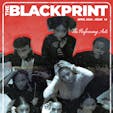BY: TORI B. POWELL
The open-floor space of the Edgewood Arts Center in Northeast Washington D.C on Feb. 29 was packed with people dancing to songs by Teyana Taylor, but the hum of the lively crowd roars louder than the bass of the music. Local artists of all mediums line the room selling their work.
"Everytime I come here I really do have a lot of fun honestly," attendee Ke'Mon Chapman shouts over a song mixed by the DJ, Anexis. "If you like art, you'll like being here. Everybody eats, you know?"

Photo by: Mahnoor Soofi
Nigel Wimberly, a junior at Howard University, is dedicated to creating spaces for Black creatives in the District. What once started out as college parties coordinated with his close friends has now turned into a professional event-planning business called 237 Entertainment.
The business entertainment major said, "We started with artist to business connections doing the house parties and once we saw people really liking it, we said, ‘we can really do something with this'."
Over time, Wimberly and his team expanded his connections to local fashion designers, vendors, visual artists, and performers to create showcases like the Underground Natives Coalition on Saturday.
At the event, after the majority of the crowd had settled in, the floor was cleared to create space in the middle of the spacious room. The lights came on and the music stopped. "What's going on?" someone in the crowd asked. Before you knew it, models of all shapes, sizes, and genders came from a back room in street-style clothing by fashion designers of the district. The crowd erupted in cheers clapping them on.

Photo of Royce Watkins by: Mahnoor Soofi
"I want to have my own vintage men's boutique later down the line," said clothes vendor, Royce Watkins. "These types of events connect me with people who actually want to see this type of stuff."
Amidst the lively environment busy with both dancing and networking alike, Watkins' racks of clothing have a long line of people behind them. "I've followed him for a brick and a half on Instagram so it's crazy that he's here," one person said while waiting to see his clothes.
A little later in the night when DJ Anexis's music stopped again, the crowd was left wondering what next to expect. When rappers soon came out to battle each other near the back of the room, audience members were far from disappointed; swaying and dancing along.
"There are a lot of Black people our age who don't have the access or the platform to put their work on display," Wimberly said.
He's not wrong either— according to studies conducted by the National Association for the Education of Young Children, there are more educational achievement gaps for African Americans than that of other races due to historic systemic factors. This predicts "not only later school outcomes but also career and work options, economic stability, health, and social opportunities."
237 Entertainment says they hope to change that by providing more opportunities, giving credit to their artists, and making sure they compensate those necessary.

Photo of Dean Bailey by: Mahnoor Soofi
"As a Black person in the United States, you're often told that your expression doesn't matter," architecture major and artist Dean Bailey says behind a table selling his art. "The reason that creative spaces for Black people are so important is because it takes away that marginalization. You can present pretty much whatever you want and it's validated here. We need that."
Bailey's work resembles graffiti and is inspired by cubism.
As the hours pass by and the night gets later, the audience slowly starts to trickle down. People leave with prints and purchases from vendors like Royce Watkins' vintage clothes table. Wimberly can now take a sigh of relief as his showcase is finally over.


